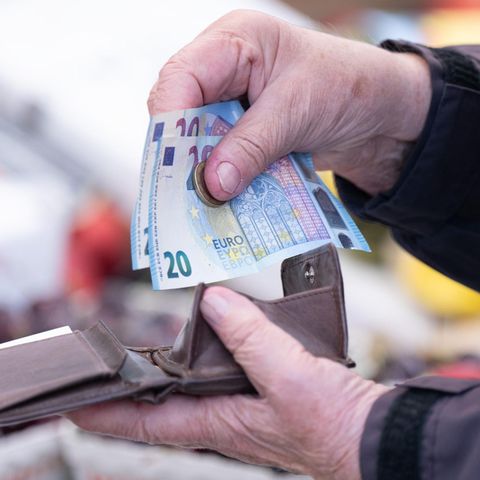Consumer prices
Inflation remains stable – however, two areas sting out
Copy the current link
Add to the memorial list
Consumer prices in Germany are still constantly increasing. The inflation rate of two percent corresponds exactly to the goal of the European Central Bank.
Consumer prices in Germany rose in July at an unchanged pace. As in June, goods and services are an average of two percent more expensive than a year ago, as the Federal Statistical Office reports.
However, the high wave of inflation in recent years has expired, says Deka chief economist Ulrich Kater. “The private households are still getting used to the increased price level, but now also attracts wages. The topic of inflation will disappear more and more from the minds of consumers.”
For months above average inflation for services
Based on preliminary data, it can be seen that services in particular with an increase of 3.1 percent and foods with an increase of 2.2 percent drive price development. The energy prices, on the other hand, have damped the inflation again, although not as strong as in the previous months. Energy was 3.4 percent cheaper than in July 2024. The so -called core inflation – i.e. the rate without the prices for food and energy that is prone to fluctuation – is still higher: As in June, it is 2.7 percent. Commerzbank boss economist Jörg Krämer describes this as a “blemish” because this is a risk of inflation if the economy is attractive.
The increased inflation of services has been persistent for months, but is now slowly declining: The 3.1 percent in this area means 0.2 points less than in June. One reason is increased wages. Ing folk host Carsten Breszki expects less inflation pressure for the coming months because, given the tense situation on the labor market, higher wages no longer seem so easy to enforce.
The European Central Bank temporarily withdrawn into the observer role a week ago at its most recent interest session. After seven interest rate cuts in a row, the monetary authorities apparently saw no need for further relaxation. The key interest rate therefore remained unchanged at two percent. For autumn, controversy between supporters and opponents of an even more relaxed monetary policy are expected.
With an inflation rate of two percent, the ECB sees its goal of price stability. Lower price increases could inhibit economic growth because private individuals and companies could delay their investments even lower prices.
Inflation expectations for the year as a whole
Compared to June, prices rose by 0.3 percent, reports the authority. The possible effects of the future customs agreement with the USA are still unclear. According to Breszki, prices for certain products in the euro zone could fall because they sold worse in the USA. On the other hand, global corporations could try to enforce higher prices in Europe to compensate for their losses in the USA.
The Bundesbank assumes that the inflation rate in Germany will fluctuate for the two percent mark in the coming months. The Council of Experts (“Economic”) expects that a value will come out by two percent in 2025.
In 2022, inflation in Germany was 6.9 percent sneaked, in 2023 it was 5.9 percent. After the Russian attack on Ukraine in February 2022, the prices for energy and food had climbed suddenly. In the past year, the inflation dropped to 2.2 percent. The higher the inflation rate, the lower the purchasing power of the people.
Dpa
km
Source: Stern





